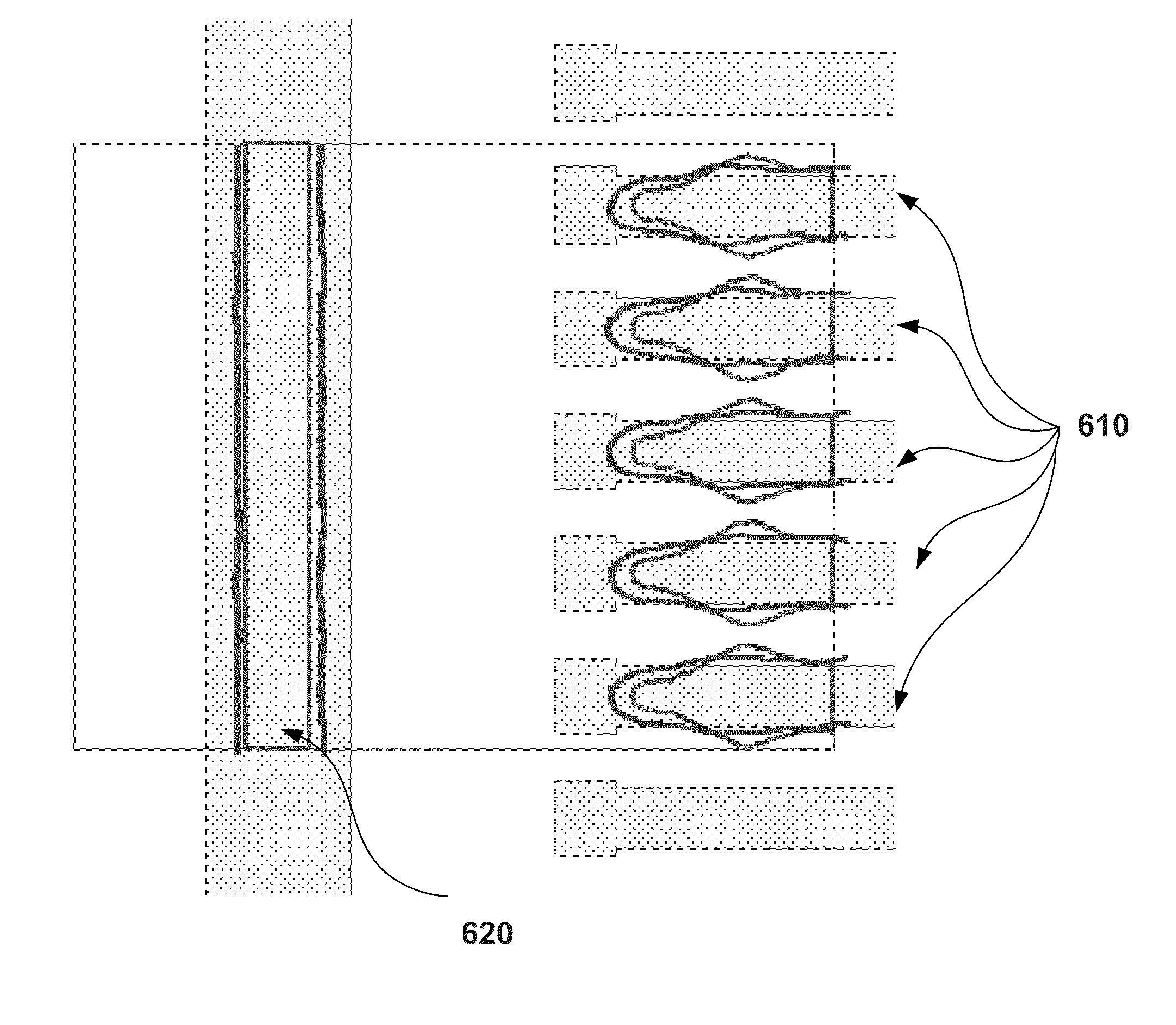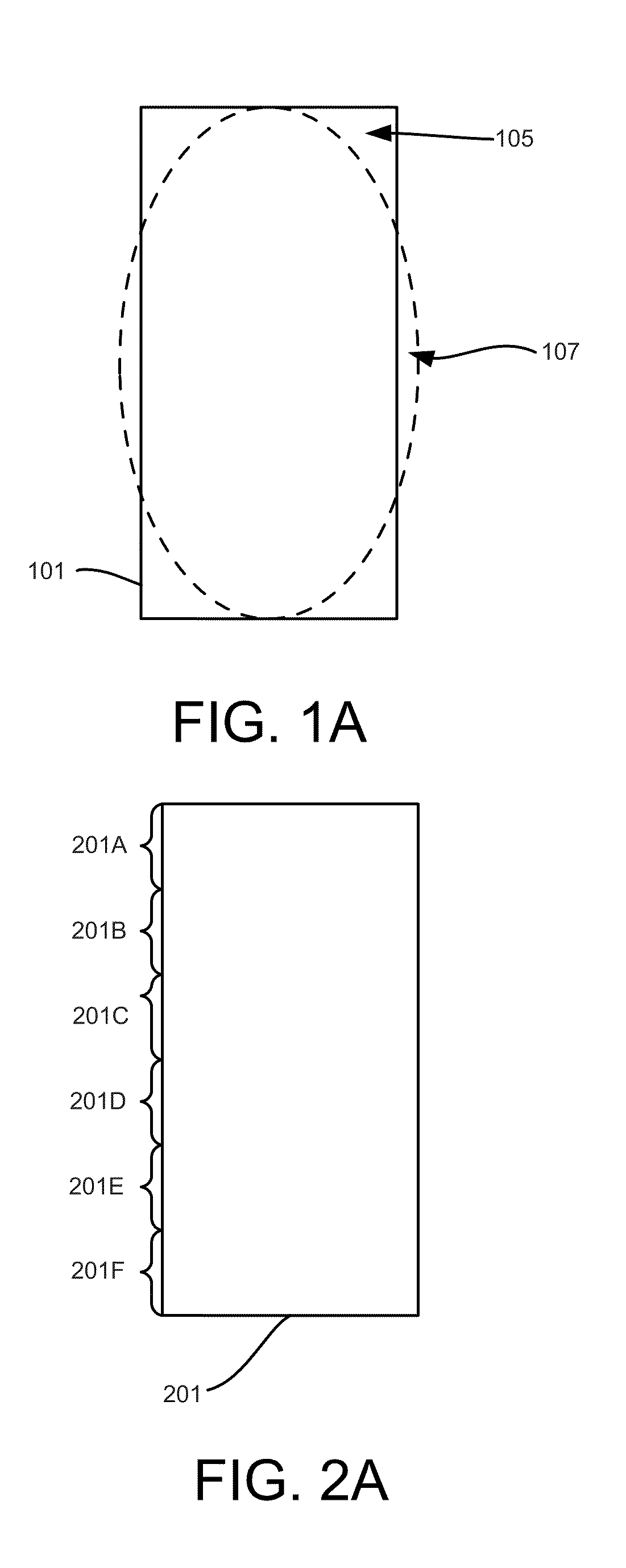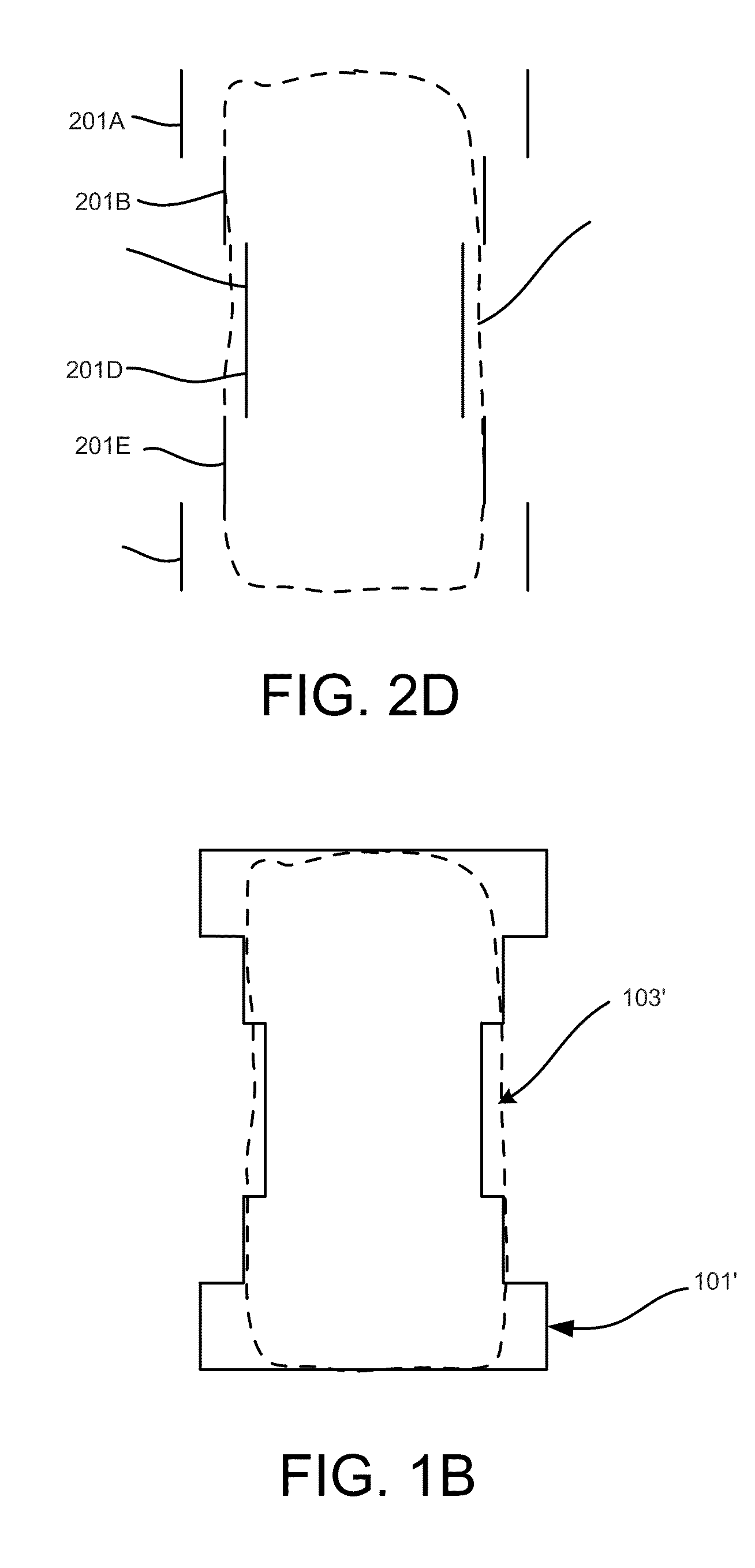Contour Alignment For Model Calibration
a technology of contour alignment and model calibration, applied in the field of calibration of models, can solve the problems of small feature size, difficult to faithfully reproduce the image, and reduced feature size, and achieve the effect of improving the model
- Summary
- Abstract
- Description
- Claims
- Application Information
AI Technical Summary
Problems solved by technology
Method used
Image
Examples
Embodiment Construction
[0037]In a photolithographic process, as explained above, electromagnetic radiation is transmitted through selectively transparent areas of a mask. The radiation passing through these transparent areas then irradiates desired portions of a layer of photoresistive material on a semiconductor substrate. The mask in turn is created from layout design data describing the geometric features that should be manufactured on the semiconductor substrate in order to create the desired circuit. For example, if a transistor should have a rectangular gate region, then the layout design data will include a rectangle defining that gate region. This rectangle in the layout design data is then implemented in a mask for creating the rectangular gate region.
[0038]During a photolithographic process, however, optical effects will prevent the shapes defined by the mask from being faithfully imaged onto the substrate. Diffractive effects, for example, may distort the image produ...
PUM
 Login to View More
Login to View More Abstract
Description
Claims
Application Information
 Login to View More
Login to View More - R&D
- Intellectual Property
- Life Sciences
- Materials
- Tech Scout
- Unparalleled Data Quality
- Higher Quality Content
- 60% Fewer Hallucinations
Browse by: Latest US Patents, China's latest patents, Technical Efficacy Thesaurus, Application Domain, Technology Topic, Popular Technical Reports.
© 2025 PatSnap. All rights reserved.Legal|Privacy policy|Modern Slavery Act Transparency Statement|Sitemap|About US| Contact US: help@patsnap.com



